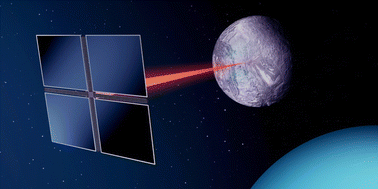Low-intensity low-temperature analysis of perovskite solar cells for deep space applications†
Abstract
High specific power (power per mass) ultralight solar arrays made of perovskite solar cells (PSCs) are being considered to power spacecraft in deep space conditions as far as Neptune (30 AU). To understand how PSCs perform and respond in deep space, we characterize PSCs under low-intensity low-temperature (LILT) conditions before and after low-energy proton irradiation. PSCs show promising performance characteristics under most LILT conditions even after exposure to low-energy protons. However, the measured cell efficiency tends to decrease at extreme lower temperatures, suggesting that further research into cell architectures and materials could improve PSCs for deep space applications.

- This article is part of the themed collection: Perovskite solar cells – Topic Highlight


 Please wait while we load your content...
Please wait while we load your content...